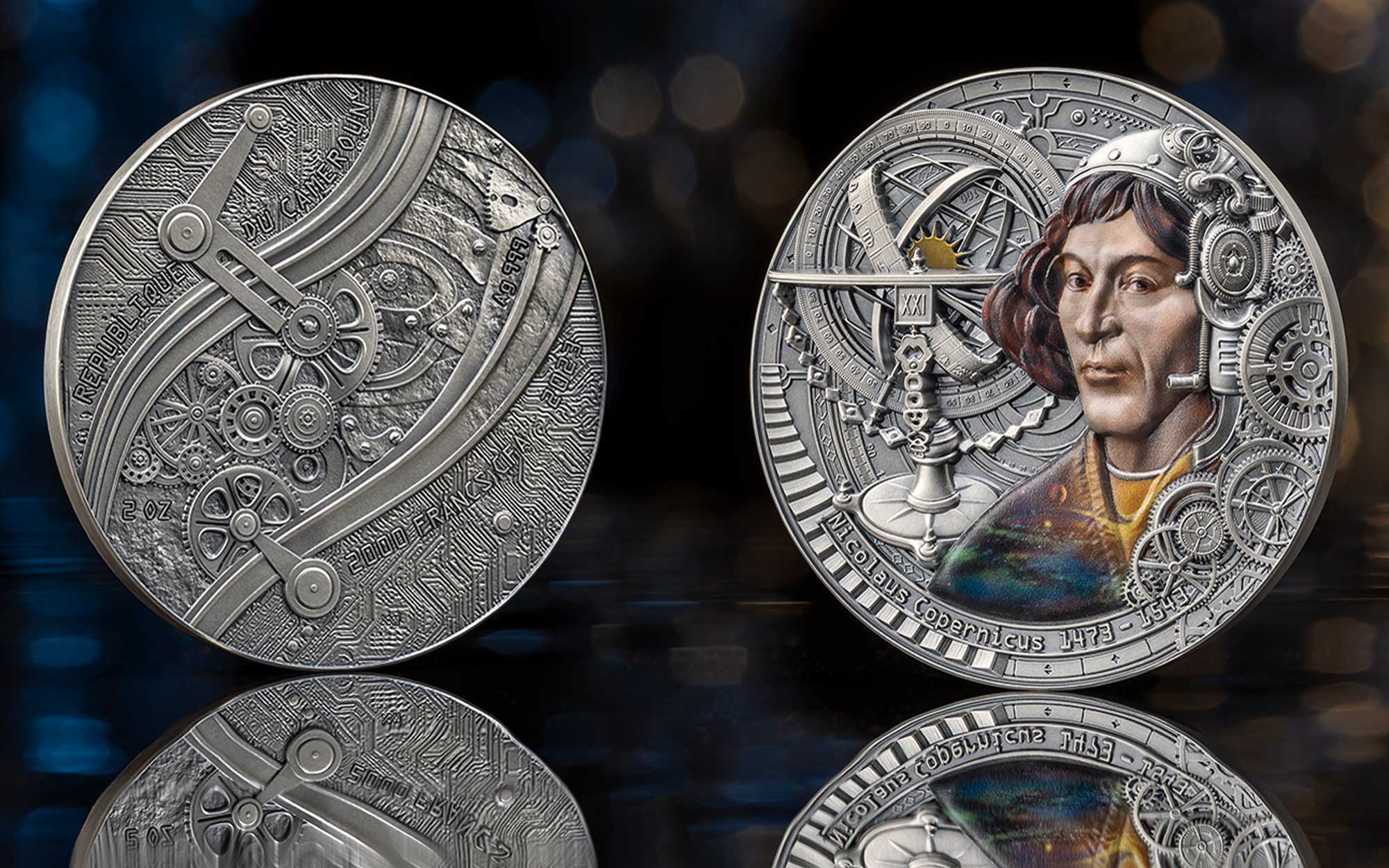Mint XXI Summer ’23: A superb portrayal of Nicolaus Copernicus and his work kicks off the Futurists of the Past series
Our look at Mint XXI’s summer range continues with a coin we felt deserved a closer look. The first in their new ‘Futurists of the Past’ series, it features a superb rendition of the groundbreaking Polish astronomer, Nicolaus Copernicus, and commemorates 550 years since his birth (or 480 years since his death if you’re a ‘glass half empty’ kind of person…). There’s more about the man, for those unfamiliar, lower down, so let’s head straight into the coin itself.
This producer, along with CIT, have really mastered the human face on coins, and this is another fine example. Using The ‘Torun portrait’ of Nicolaus Copernicus (anonymous, c. 1580), named for the town hall it hangs in, it’s been heavily embellished with various instruments from his work. Everything excepting the portrait is antique-finished. The portrait itself has some great little touches, with his robe holding a cosmic scene. We suspect the gearing to the right of the coin will be common to the series.
The obverse continues that gearing theme, and exhibits good levels of relief in its own right. Again, we suspect this will be common to the series, but when it looks this good, we’re not complaining. It’s a two-ounce coin, boxed with a COA, and with a mintage capped at 500 pieces. A fascinating theme for a coin series, this is one we’re going to be watching closely as it fills out, maybe with such luminaries as Leonardo da Vinci, Stephen Hawking, and Aristotle, for example. Superb.
NICOLAUS COPERNICUS – GROUNDBREAKING SCIENCE
Nicolaus Copernicus (1473-1543) was a groundbreaking Polish astronomer, mathematician, and cleric whose revolutionary heliocentric model of the universe laid the foundation for modern astronomy. Born in Torun, Poland, Copernicus challenged the prevailing geocentric view, which placed Earth at the centre of the cosmos, by proposing that the planets, including Earth, revolved around the Sun in circular orbits.
In his seminal work “De revolutionibus orbium coelestium” (On the Revolutions of the Celestial Spheres), published posthumously in 1543, Copernicus presented his heliocentric theory. This revolutionary concept sparked a significant shift in scientific thought and initiated the Copernican Revolution, ultimately leading to the overthrow of the Ptolemaic geocentric model.
Copernicus’ work laid the groundwork for subsequent astronomers, such as Johannes Kepler and Galileo Galilei, who built upon his ideas and provided further evidence for the heliocentric model. Although Copernicus’ ideas were initially met with scepticism and opposition, his contributions paved the way for the Scientific Revolution and the development of modern astronomy, reshaping humanity’s understanding of the cosmos and its place within it.
| SPECIFICATION | |
| DENOMINATION | 2000 Francs CFA (Cameroon) |
| COMPOSITION | 62.2 g of 0.999 silver |
| DIMENSIONS | 50.0 mm |
| FINISH | Antique |
| MODIFICATIONS | High-relief, colour |
| MINTAGE | 500 |







Leave A Comment